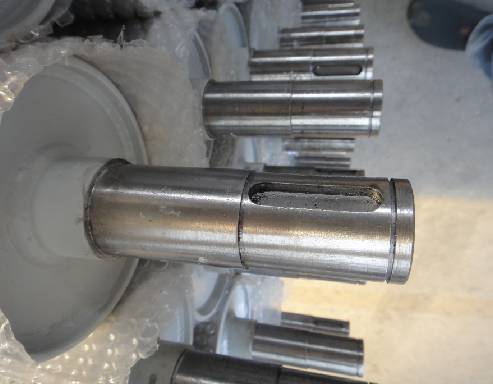 Afrikaans
Afrikaans  Albanian
Albanian  Amharic
Amharic  Arabic
Arabic  Armenian
Armenian  Azerbaijani
Azerbaijani  Basque
Basque  Belarusian
Belarusian  Bengali
Bengali  Bosnian
Bosnian  Bulgarian
Bulgarian  Catalan
Catalan  Cebuano
Cebuano  Corsican
Corsican  Croatian
Croatian  Czech
Czech  Danish
Danish  Dutch
Dutch  English
English  Esperanto
Esperanto  Estonian
Estonian  Finnish
Finnish  French
French  Frisian
Frisian  Galician
Galician  Georgian
Georgian  German
German  Greek
Greek  Gujarati
Gujarati  Haitian Creole
Haitian Creole  hausa
hausa  hawaiian
hawaiian  Hebrew
Hebrew  Hindi
Hindi  Miao
Miao  Hungarian
Hungarian  Icelandic
Icelandic  igbo
igbo  Indonesian
Indonesian  irish
irish  Italian
Italian  Japanese
Japanese  Javanese
Javanese  Kannada
Kannada  kazakh
kazakh  Khmer
Khmer  Rwandese
Rwandese  Korean
Korean  Kurdish
Kurdish  Kyrgyz
Kyrgyz  Lao
Lao  Latin
Latin  Latvian
Latvian  Lithuanian
Lithuanian  Luxembourgish
Luxembourgish  Macedonian
Macedonian  Malgashi
Malgashi  Malay
Malay  Malayalam
Malayalam  Maltese
Maltese  Maori
Maori  Marathi
Marathi  Mongolian
Mongolian  Myanmar
Myanmar  Nepali
Nepali  Norwegian
Norwegian  Norwegian
Norwegian  Occitan
Occitan  Pashto
Pashto  Persian
Persian  Polish
Polish  Portuguese
Portuguese  Punjabi
Punjabi  Romanian
Romanian  Russian
Russian  Samoan
Samoan  Scottish Gaelic
Scottish Gaelic  Serbian
Serbian  Sesotho
Sesotho  Shona
Shona  Sindhi
Sindhi  Sinhala
Sinhala  Slovak
Slovak  Slovenian
Slovenian  Somali
Somali  Spanish
Spanish  Sundanese
Sundanese  Swahili
Swahili  Swedish
Swedish  Tagalog
Tagalog  Tajik
Tajik  Tamil
Tamil  Tatar
Tatar  Telugu
Telugu  Thai
Thai  Turkish
Turkish  Turkmen
Turkmen  Ukrainian
Ukrainian  Urdu
Urdu  Uighur
Uighur  Uzbek
Uzbek  Vietnamese
Vietnamese  Welsh
Welsh  Bantu
Bantu  Yiddish
Yiddish  Yoruba
Yoruba  Zulu
Zulu Efficient Solutions for Conveyor Belt Cleaning in Industrial Applications
Primary Conveyor Belt Cleaners Importance and Benefits
In various industries, conveyor belts play a pivotal role in transporting materials efficiently. However, one of the challenges that come with using conveyor systems is maintaining optimal cleanliness. This is where primary conveyor belt cleaners come into play, ensuring that the belts remain clean for effective performance and prolonged equipment life.
Understanding Primary Conveyor Belt Cleaners
Primary conveyor belt cleaners are essential devices installed on conveyor systems to prevent the carryback, which refers to the residual material that adheres to the belt after it has passed over the discharge point. Carryback can lead to numerous operational problems, including material loss, increased maintenance costs, and safety hazards due to spillage. Primary cleaners are positioned immediately after the discharge pulley to maximize their effectiveness, and they typically consist of blades made from various materials like rubber, polyurethane, or metal, depending on the application and the materials being transported.
The Importance of Proper Cleaning
1. Operational Efficiency Conveyor belts that are not cleaned regularly can accumulate debris, which can impede their performance. This buildup can slow down operations, leading to increased downtime as maintenance staff works to clean the system or repair damages caused by friction and wear. A primary cleaner ensures that the belt remains as close to 100% operational efficiency as possible.
2. Cost-Effectiveness Investing in primary conveyor belt cleaners can translate into significant cost savings over time. By minimizing carryback, companies can prevent material loss, reducing the need for excess materials that would otherwise be lost. Additionally, clean belts require less maintenance, and fewer breakdowns result in less expensive repairs and reduced downtime.
primary conveyor belt cleaners

3. Safety Considerations Residual material from carryback can pose safety risks. Spills in the workplace not only create a slipping hazard for employees but can also lead to environmental issues and compliance violations. Implementing effective belt cleaners reduces these risks, creating a safer working environment.
4. Equipment Longevity Cleaner conveyor belts contribute to the longevity of the entire system. When carryback is minimized, there is less wear and tear on both the belt and other components of the conveyor system. This preventive maintenance approach reduces the likelihood of costly replacements and extends the lifespan of the machinery.
5. Environmental Responsibility Today's industries are increasingly focused on sustainability. Conveyor belt cleaners support green initiatives by minimizing waste and improving the efficiency of material usage. By reducing spillage and carryback, companies contribute to a cleaner environment and showcase their commitment to responsible practices.
Choosing the Right Primary Cleaner
Selecting the appropriate primary conveyor belt cleaner depends on several factors, including the type of materials being transported, the operating environment, and the specific requirements of the conveyor system. Factors such as belt width, speed, and the level of carryback must also be considered. Consultation with manufacturers and engineers can help in making an informed choice to ensure optimal performance.
Conclusion
In summary, primary conveyor belt cleaners are crucial components of any effective conveyor system. They not only ensure operational efficiency and cost savings but also enhance safety, prolong equipment life, and align with sustainable practices. By investing in quality belt cleaning solutions, industries can enhance their productivity while maintaining a safe and clean work environment. Adopting these practices is not just a matter of efficiency—it's a strategic investment in the future of industrial operations.
-
Revolutionizing Conveyor Reliability with Advanced Rubber Lagging PulleysNewsJul.22,2025
-
Powering Precision and Durability with Expert Manufacturers of Conveyor ComponentsNewsJul.22,2025
-
Optimizing Conveyor Systems with Advanced Conveyor AccessoriesNewsJul.22,2025
-
Maximize Conveyor Efficiency with Quality Conveyor Idler PulleysNewsJul.22,2025
-
Future-Proof Your Conveyor System with High-Performance Polyurethane RollerNewsJul.22,2025
-
Driving Efficiency Forward with Quality Idlers and RollersNewsJul.22,2025





























